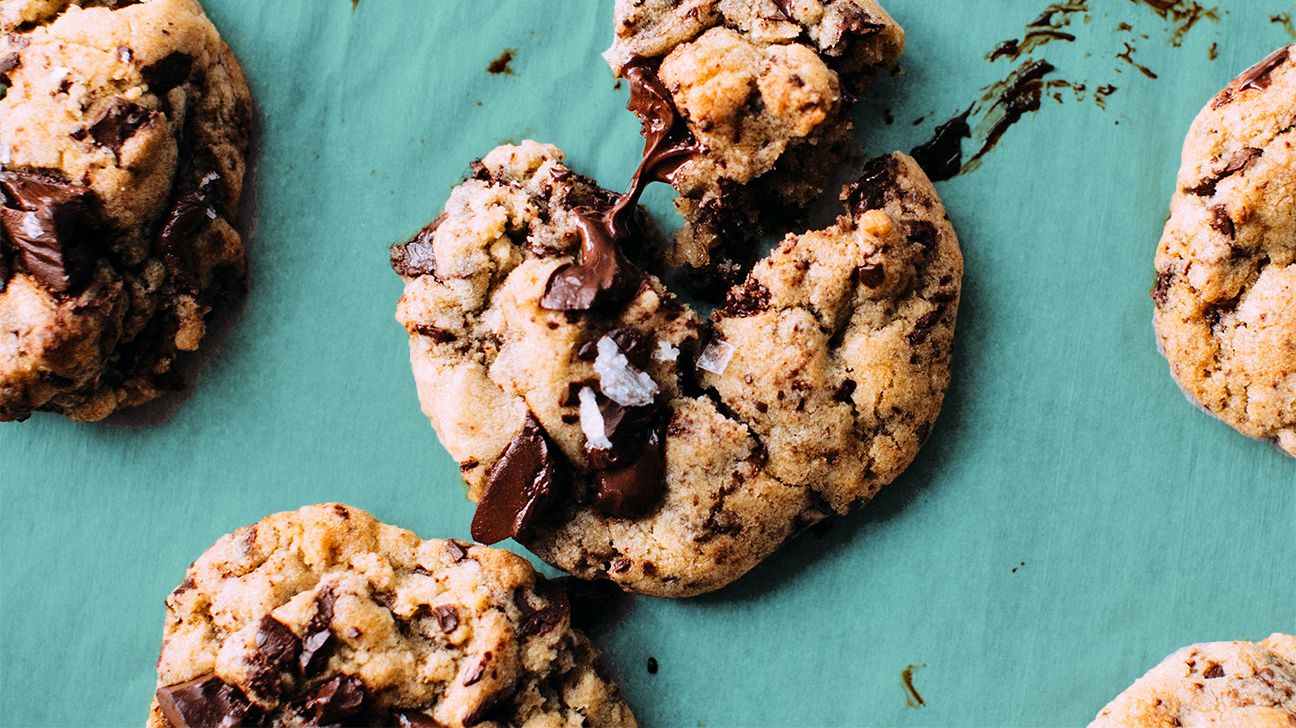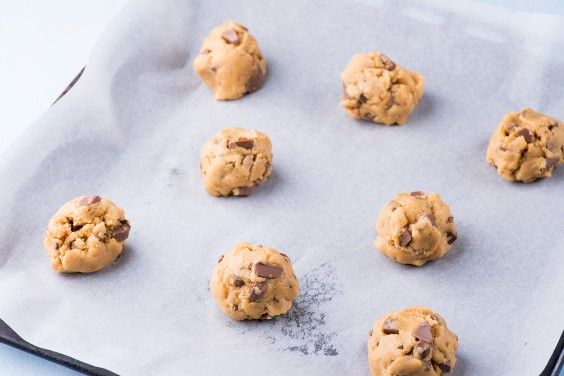We include products we think are useful for our readers. If you buy through links on this page, we may earn a small commission. Here’s our process.
Greatist only shows you brands and products that we stand behind.
Our team thoroughly researches and evaluates the recommendations we make on our site. To establish that the product manufacturers addressed safety and efficacy standards, we:- Evaluate ingredients and composition: Do they have the potential to cause harm?
- Fact-check all health claims: Do they align with the current body of scientific evidence?
- Assess the brand: Does it operate with integrity and adhere to industry best practices?
Mmmmmmmmm. Just seeing the words cookies and soft in the same sentence brings on something close to a sensory overload.
Even when you’re baking for a crowd, we know you’ll bake a few extra for leftover treats. And with each passing day, they’ll veer a little closer toward hockey puck territory.
If, like us, you love whipping up batches of sweet, melt-in-the-mouth goodness for the ones you love, the pride that accompanies the ecstatic faces of your friends and family can be unmatched.
However, the passing of time is inevitable. And as it hardens all of us, so too do cookies. Even they are not immune. This fate is, sadly, unavoidable (unless you pump your cookies full of chemical preservatives. But please, don’t do that).
The good news is that the right baking and storage techniques can keep homemade cookies soft and chewy for longer, so you have more time to enjoy them in all their glory — you made them, so why should your pals get all the chewy yumness?
Plus it’s super easy. And easy stuff is great. Here’s how to make super-soft cookies and keep them that way.
Before we talk about how to keep homemade cookies soft, let’s quickly brush up on how to make soft, chewy cookies in the first place.
Some cookies — like biscotti or gingersnaps — are meant to be crunchy. And there is always room in our hearts for a crunchy biscotti. But chocolate chip or oatmeal can go either way. So what’s the secret to achieving a fudgy texture instead of one that’s thin and crispy? It all comes down to moisture.
Scooping your cookies into tall mounds instead of flattening them with your palm will help keep the mixture a little looser. They’ll still end up in a cookie shape, they’ll just have the right texture.
Also, underbaking them by a minute or 2 will help them retain a dense, chewy bite, explains Jenny McCoy, pastry baking arts chef-instructor at the Institute for Culinary Education in New York.
Adding more moisture to your dough in the form of extra butter, egg yolks, or brown sugar will make your cookies even softer.
We go into even more detail on how to achieve chewy perfection here.
We’re going to teach you about cookies. And if you accidentally learn some science along the way, we’re not sorry and never will be.
Cookies go from chewy to crunchy for exactly the reason you might expect: They start to dry out. “The loss of moisture to the air is what will turn soft cookies hard,” says executive chef Leah Henderson, who oversees the pastry and dessert program for D’Amico & Partners restaurants.
This process actually starts the moment you pull them out of the oven and let them cool. This is why still-warm cookies are the softest of all and make us feel as gooey inside as they are.
“The remaining trapped moisture in the cookies is in a constant process of evaporating from the flour,” explains Jerrelle Guy, author of Black Girl Baking.
Nooooo! Come back, moisture! You never call, text, nothing.
At the same time, starches in the flour begin to crystallize and harden. The two processes combined are what eventually turns a fresh, soft cookie into a hard, stale one, Guy advises.
Think soft cookies are special? Try soft cookies that make you question the nature of existence. We’ve got some pretty amazing cannabis cookie recipes right here.
You can’t completely prevent moisture loss from happening, so all cookies will turn stale eventually. But lucky for you, cookies that have more moisture to begin with will stay soft and chewy for longer.
Here are the top tips to keep in mind when looking to hold on to that quasi-orgasmic chewy cookieness for longer:
- Underbake. Consider tweaking the ingredient ratios as mentioned above and underbake them a little bit. “Pull them out of the oven when the center is still a little raw,” Guy says. (They’ll keep cooking when you take them out of the oven.)
- Pack at just the right time. Wait to pack the cookies up until they’re just cool enough and don’t fall apart when you try to lift them. The extra moisture from the still-warm cookies will help them stay fresher longer.
- Zip that sh*t. Packing-wise, Guy and Henderson both recommend putting them in an airtight container or zip-top bag, which will help slow down moisture loss and retain freshness for over a week.
- Stacks on stacks on stacks. If you need to layer cookies on top of each other, a piece of waxed paper or parchment paper between each layer will keep them from sticking to one another.
- Microwave. To make them even softer when you’re ready to eat, stick the cookies in the microwave for 10 to 15 seconds with a glass of water next to them, Henderson says.
For longer-term storage, stick your cookies in the freezer. Henderson recommends layering completely cooled cookies between sheets of parchment paper and wrap the layered stack in plastic wrap.
Then, place the stack in an airtight container. If there’s any extra space in the container, fill it with bubble wrap. It’ll minimize airflow and keep moisture from evaporating, according to Henderson.
When it’s time to eat, just let the cookies come to room temperature.
Vegan cookies the order of the day? Same rules apply. “Assuming you’re keeping the same amount of sugar, binder, and fat, they should last as long as their non-vegan brethren,” Guy says.
Don’t sleep on vegan baking — you don’t need animal product to generate mouthwatering flavors.
Hang tight, gluten-free aficionados! We’ve got you.
Without the structural power of gluten, GF cookies do tend to dry out a little quicker. However, all is not lost — you can still maintain that gooey cookie magic.
Using a flour blend that’s higher in protein or contains tapioca flour, both of which provide elasticity, can help make them soft in the first place, says Guy.
Store them in an airtight container, just like conventional cookies, for up to 48 hours. If you plan to eat them after that, they’ll stay fresher if you stick them in the freezer, Guy says.
Drooling yet? Here’s a single-serving chocolate chip cookie to give you immediate satisfaction. Just you. Everyone else can keep their grubby mitts off.


